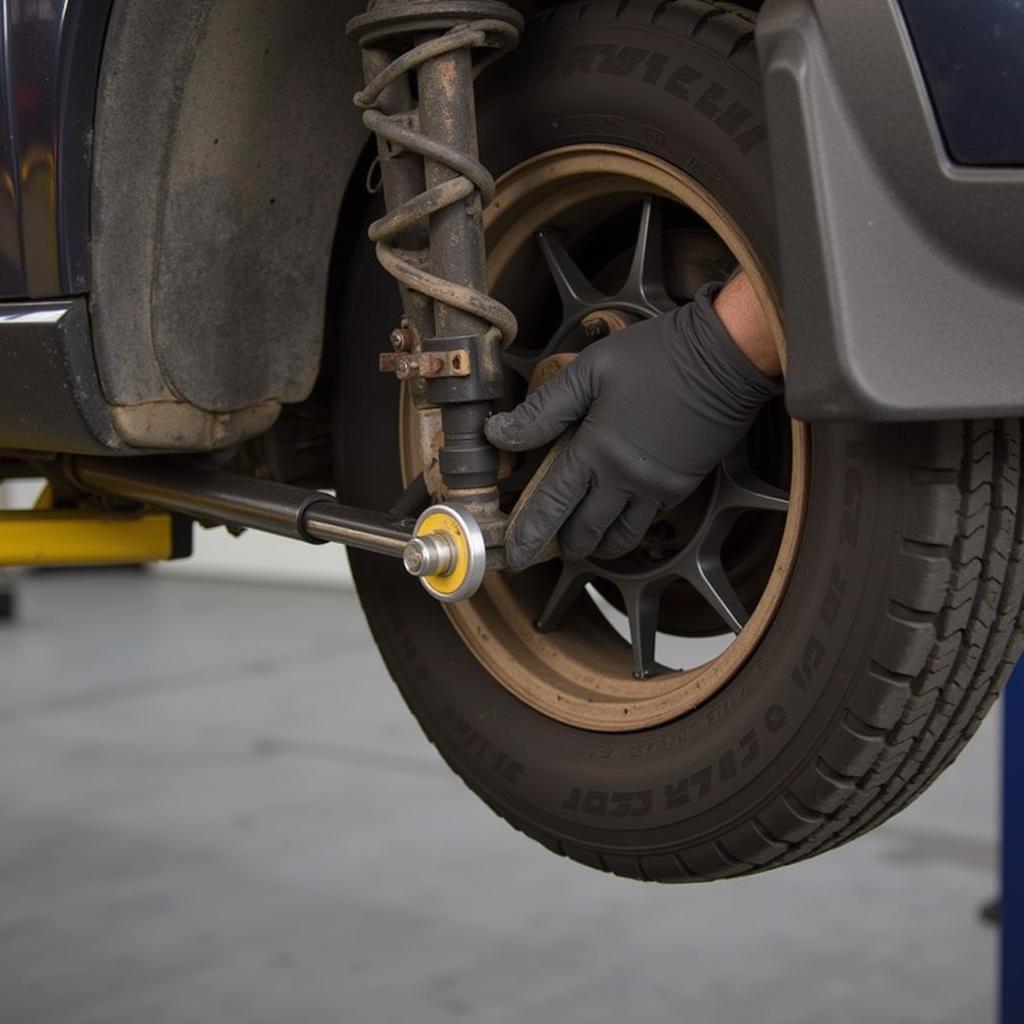A 2005 BMW X3 making a “kong” sound can be frustrating and concerning. This article will explore the common causes of this noise, provide diagnostic steps, and discuss solutions to get your X3 running smoothly again. From suspension issues to drivetrain problems, we’ll cover everything you need to know to tackle that annoying kong sound.
Understanding the “Kong” Sound in Your 2005 BMW X3
The “kong” sound can manifest in different ways, from a single thud to a rhythmic clunking. The frequency and intensity of the sound can vary depending on the underlying cause. It’s important to pay attention to when the sound occurs – while accelerating, braking, turning, or going over bumps – as this will help narrow down the potential culprits. Is it a hollow kong sound? A metallic kong? These details are crucial for accurate diagnosis.
Common Causes of a “Kong” Sound
Several components in your 2005 BMW X3 can contribute to a “kong” sound. Here are some of the most common culprits:
- Suspension Issues: Worn or damaged control arms, ball joints, sway bar links, or bushings are often the primary suspects. These components play a vital role in your X3’s stability and can produce a kong sound, especially when going over bumps or uneven surfaces.
- Drivetrain Problems: A failing CV joint, a worn universal joint, or issues within the differential can also generate a kong sound. These problems usually manifest during acceleration or deceleration.
- Exhaust System: A loose or damaged exhaust system component, such as a muffler or exhaust pipe, can create a kong sound, especially if it’s contacting the chassis.
- Loose or Broken Components: Sometimes, a simple loose bolt or a broken bracket can be the source of the noise. Thoroughly inspecting the undercarriage of your X3 can often reveal such issues.
Diagnosing the “Kong” Sound: A Step-by-Step Guide
- Listen Carefully: Pay attention to when and how the kong sound occurs. Does it happen when you accelerate, brake, turn, or hit a bump? This information is crucial for diagnosis.
- Visual Inspection: Check the undercarriage of your X3 for any obvious signs of damage, like broken or loose components, worn bushings, or leaking fluids.
- Test Drive: Take your X3 for a test drive and try to reproduce the kong sound. Pay close attention to the conditions that trigger it.
- Professional Inspection: If you’re unable to identify the cause, take your X3 to a qualified mechanic for a professional diagnosis. They have the tools and expertise to pinpoint the issue accurately.
Solutions and Repairs
Once the cause of the kong sound is identified, the appropriate repairs can be carried out. This may involve replacing worn suspension components, repairing or replacing drivetrain parts, or securing loose components. Addressing the issue promptly can prevent further damage and ensure your X3’s safety and performance.
Why is it Important to Address the Kong Sound?
Ignoring a kong sound can lead to more serious and costly problems down the road. A worn suspension component, for example, can compromise your X3’s handling and stability, potentially leading to an accident. Addressing the issue early on is the best way to prevent further damage and ensure your safety.
 Repairing the suspension of a BMW X3 to eliminate kong sound
Repairing the suspension of a BMW X3 to eliminate kong sound
Conclusion
The “kong” sound in your 2005 BMW X3 shouldn’t be ignored. By understanding the potential causes and following the diagnostic steps outlined in this article, you can effectively address the issue and get your X3 back on the road in optimal condition. Don’t hesitate to seek professional help if you need it.
FAQ
-
What could be causing a kong sound in my 2005 BMW X3? Several issues can cause this, including worn suspension components, drivetrain problems, exhaust system issues, or loose parts.
-
How can I diagnose the kong sound myself? Listen carefully to when the sound occurs, visually inspect the undercarriage, and perform a test drive.
-
Should I take my X3 to a mechanic? If you can’t identify the cause, a professional diagnosis is recommended.
-
Can ignoring the kong sound cause further damage? Yes, delaying repairs can lead to more serious and costly problems.
-
How can I prevent kong sounds in the future? Regular maintenance and inspections are key to preventing suspension and drivetrain issues.
-
What are the most common suspension components that cause kong sounds? Control arms, ball joints, sway bar links, and bushings are frequent culprits.
-
Is it safe to drive my X3 with a kong sound? While it might be drivable initially, it’s best to address the issue promptly to ensure safety and prevent further damage.
Related Articles
- BMW X3 Suspension Troubleshooting Guide
- Common BMW X3 Drivetrain Issues
- Maintaining Your BMW X3 for Optimal Performance
Need support? Contact us via Whatsapp: +1 (641) 206-8880, Email: CARDIAGTECH[email protected] or visit us at 276 Reock St, City of Orange, NJ 07050, United States. Our customer service team is available 24/7.
